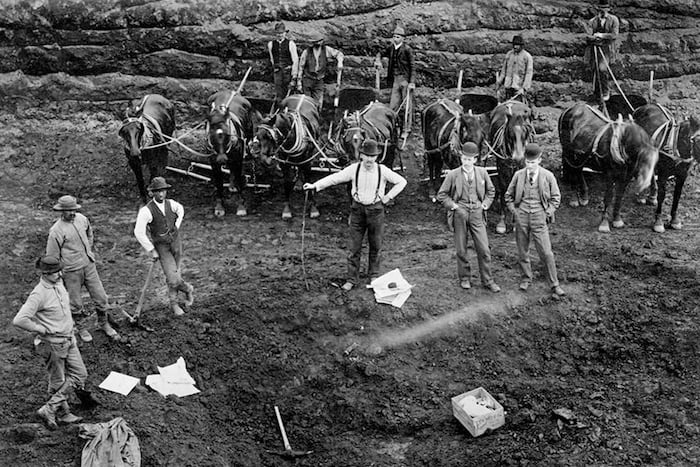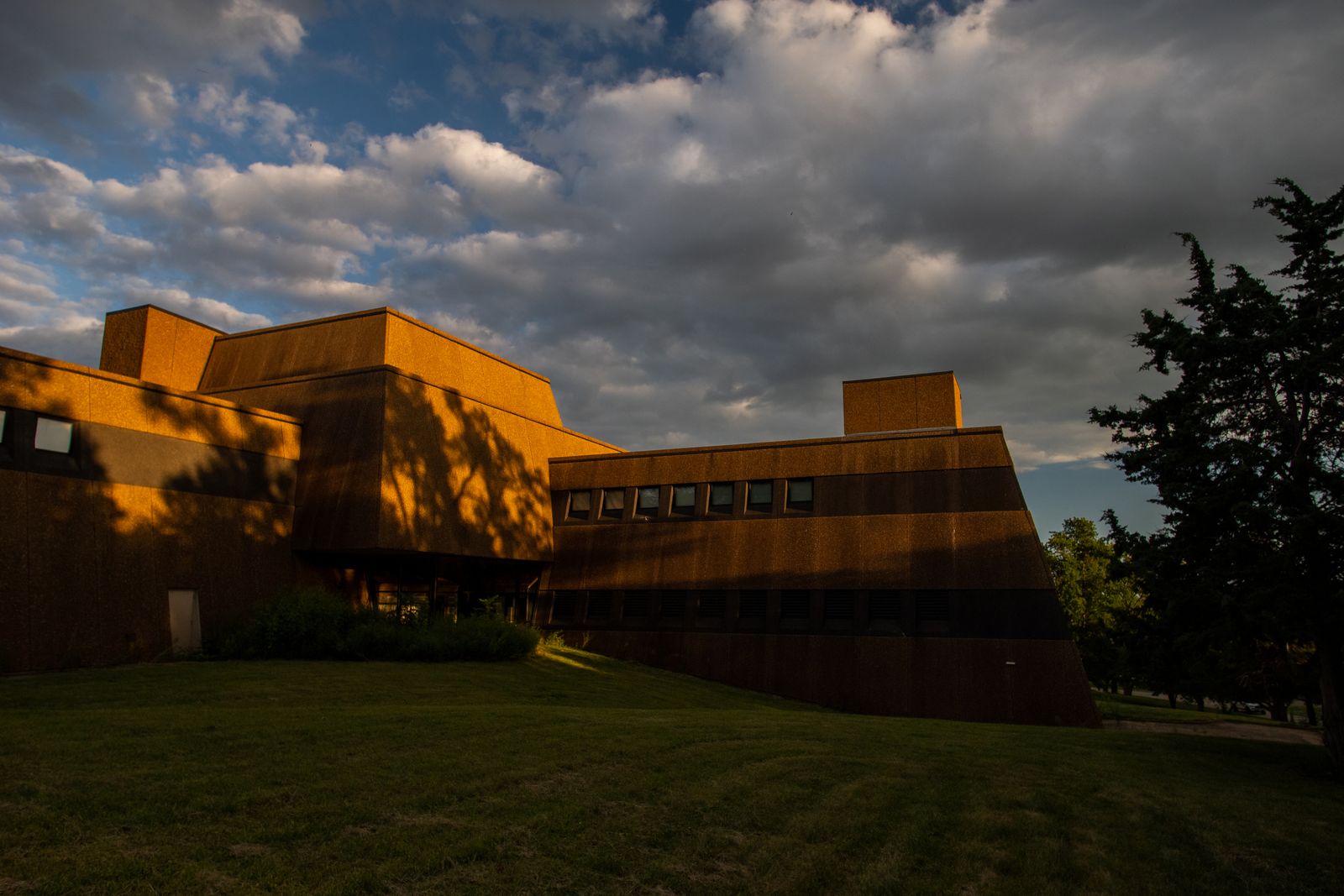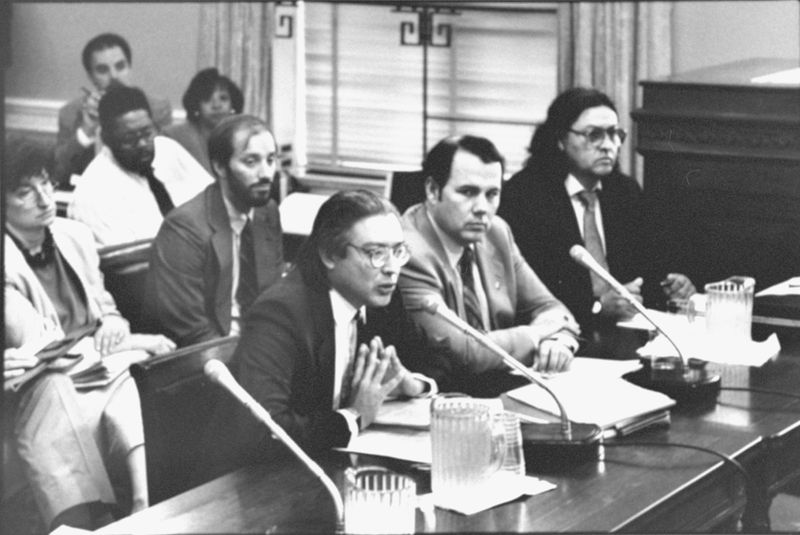North Dakota
Institutions reported making 93% of the more than 500 Native American remains taken from North Dakota available for return to tribes under NAGPRA.
There are six institutions located in North Dakota that reported Native American remains taken from across the country.
| Institution | Remains Not Made Available for Return | Remains Made Available for Return | % of Remains Made Available for Return |
|---|---|---|---|
| Bonanzaville | 1 | 1 | 50% |
| U.S. Department of Agriculture | 1 | 0 | 0% |
| Dickinson State University | 0 | 4 | 100% |
| State Historical Society of North Dakota | 0 | 2 | 100% |
| U.S. Department of the Interior | 0 | 34 | 100% |
| Univ. of North Dakota | 0 | 57 | 100% |
There are 28 institutions that reported Native American remains taken from North Dakota.
| Institution | Remains Not Made Available for Return | Remains Made Available for Return | % of Remains Made Available for Return |
|---|---|---|---|
| Harvard University | 23 | 142 | 86% |
| American Museum of Natural History | 4 | 6 | 60% |
| Illinois State Museum | 2 | 0 | 0% |
| Milwaukee Public Museum | 2 | 7 | 78% |
| Montana State University, Museum of the Rockies | 1 | 0 | 0% |
| New York University, College of Dentistry | 1 | 2 | 67% |
| South Dakota State Historical Society, State Archaeological Research Center | 1 | 0 | 0% |
| U.S. Department of Agriculture | 1 | 0 | 0% |
| U.S. Department of Defense | 1 | 29 | 97% |
| University of Michigan Museum of Anthropology | 1 | 1 | 50% |
| Beloit College, Logan Museum of Anthropology | 0 | 22 | 100% |
| Columbia University, Department of Anthropology | 0 | 14 | 100% |
| Dickinson State University | 0 | 4 | 100% |
| Filson Historical Society | 0 | 1 | 100% |
| Indiana University | 0 | 156 | 100% |
| Minnesota Indian Affairs Council | 0 | 1 | 100% |
| Oregon State University | 0 | 3 | 100% |
| Robert S. Peabody Institute of Archaeology, Phillips Academy | 0 | 1 | 100% |
| Sioux City Public Museum | 0 | 1 | 100% |
| State Historical Society of North Dakota | 0 | 2 | 100% |
| U.S. Department of the Interior | 0 | 36 | 100% |
| Univ. of North Dakota | 0 | 18 | 100% |
| University of California, Berkeley | 0 | 6 | 100% |
| University of Iowa, Office of the State Archaeologist | 0 | 1 | 100% |
| University of Montana | 0 | 4 | 100% |
| University of Tennessee, Knoxville | 0 | 6 | 100% |
| Wisconsin Historical Society | 0 | 2 | 100% |
| Yale University, Peabody Museum of Natural History | 0 | 3 | 100% |
Institutions made Native American remains taken from North Dakota available for return to 31 tribes.
| Tribe | Remains Made Available for Return to Tribe |
|---|---|
| Three Affiliated Tribes of the Fort Berthold Reservation, North Dakota | 329 |
| Spirit Lake Tribe, North Dakota | 92 |
| Sisseton-Wahpeton Oyate of the Lake Traverse Reservation, South Dakota | 74 |
| Turtle Mountain Band of Chippewa Indians of North Dakota | 53 |
| Little Shell Tribe of Chippewa Indians of Montana | 44 |
| Standing Rock Sioux Tribe of North and South Dakota | 43 |
| Assiniboine and Sioux Tribes of the Fort Peck Indian Reservation, Montana | 29 |
| Northern Cheyenne Tribe of the Northern Cheyenne Indian Reservation, Montana | 23 |
| Cheyenne River Sioux Tribe of the Cheyenne River Reservation, South Dakota | 22 |
| Fort Belknap Indian Community of the Fort Belknap Reservation of Montana | 20 |
| Oglala Sioux Tribe | 19 |
| Crow Creek Sioux Tribe of the Crow Creek Reservation, South Dakota | 18 |
| Lower Brule Sioux Tribe of the Lower Brule Reservation, South Dakota | 18 |
| Rosebud Sioux Tribe of the Rosebud Indian Reservation, South Dakota | 18 |
| Flandreau Santee Sioux Tribe of South Dakota | 17 |
| Lower Sioux Indian Community in the State of Minnesota | 17 |
| Yankton Sioux Tribe of South Dakota | 17 |
| Prairie Island Indian Community in the State of Minnesota | 16 |
| Upper Sioux Community, Minnesota | 15 |
| Shakopee Mdewakanton Sioux Community of Minnesota | 14 |
| Crow Tribe of Montana | 13 |
| Eastern Shoshone Tribe of the Wind River Reservation, Wyoming | 13 |
| Northern Arapaho Tribe of the Wind River Reservation, Wyoming | 13 |
| Red Lake Band of Chippewa Indians, Minnesota | 13 |
| Santee Sioux Nation, Nebraska | 6 |
| Cheyenne and Arapaho Tribes, Oklahoma | 5 |
| Lineal Descendant | 3 |
| Cherokee Nation | 1 |
| Chippewa Cree Indians of the Rocky Boy's Reservation, Montana | 1 |
| Minnesota Chippewa Tribe, Minnesota | 1 |
| Ottawa Tribe of Oklahoma | 1 |
Institutions reported Native American remains taken from 22 counties in North Dakota.
| County | Remains Taken From County Not Made Available for Return | Remains Made Available for Return | % of Remains Made Available for Return |
|---|---|---|---|
| Morton County | 2 | 39 | 95% |
| Oliver County | 2 | 58 | 97% |
| Bowman County | 1 | 0 | 0% |
| Burleigh County | 1 | 5 | 83% |
| McKenzie County | 1 | 4 | 80% |
| Pembina County | 1 | 0 | 0% |
| Stutsman County | 1 | 13 | 93% |
| Barnes County | 0 | 75 | 100% |
| Benson County | 0 | 122 | 100% |
| Grand Forks County | 0 | 4 | 100% |
| LaMoure County | 0 | 4 | 100% |
| McLean County | 0 | 18 | 100% |
| Mercer County | 0 | 19 | 100% |
| Nelson County | 0 | 4 | 100% |
| Ramsey County | 0 | 26 | 100% |
| Ransom County | 0 | 6 | 100% |
| Sioux County | 0 | 33 | 100% |
| Slope County | 0 | 1 | 100% |
| Stark County | 0 | 4 | 100% |
| Walsh County | 0 | 2 | 100% |
| Ward County | 0 | 2 | 100% |
| Williams County | 0 | 7 | 100% |
Know how an institution is handling repatriation? Have a personal story to share? We'd like to hear from you.
Watch an informational webinar with our reporters.
This tool presents a dataset maintained by the National Park Service containing all the Native American human remains and associated funerary objects that institutions have reported to the federal government under the Native American Graves Protection and Repatriation Act. The dataset includes information about the state and county where remains and objects were taken from, which institutions hold them and whether they have been made available for return to tribes.
The data is self-reported by institutions. The amount of unrepatriated Native American remains reported by institutions is a minimum estimate of individuals and institutions frequently adjust these numbers when they reinventory groups of remains. Some institutions that are subject to NAGPRA have also entirely failed to report the remains in their possession. As a result, the numbers provided are best taken as estimates. The actual number and geographic scope of what’s held by publicly funded institutions is larger than what is presently documented.
ProPublica supplemented this dataset with information about cultural affiliation and disposition to specific tribes by systematically parsing the text of Notices of Inventory Completion published in the Federal Register. An additional dataset from the Department of Housing and Urban Development, the Tribal Directory Assessment Tool, was used for the section on remains not made available for return from counties that each tribe has indicated interest in to the federal government.
Institution location and tribal headquarters location information was provided by National NAGPRA. The location of some groups that are not federally recognized was provided through research by ProPublica.
Institutions that are part of a larger entity are grouped. (For example, the Mesa Verde National Park is part of the U.S. Department of the Interior.)
Institutions that have not submitted information to the federal government are not listed. The Smithsonian Institution is not listed because its repatriation process falls under the National Museum of the American Indian Act and it is not required to publicly report its holdings with the same detail as institutions subject to NAGPRA.
If you work for an institution and would like to provide comment on your institution’s repatriation efforts, please email [email protected]. If you think the data is incorrect or have a data request, please get in touch. We are aware of some issues with the accuracy of location information and tribes mistakenly being identified for disposition of Native American remains in published notices.
If you want to share something else with ProPublica, we’d like to hear from you.
If you have questions about implementing or complying with the Native American Graves Protection and Repatriation Act, get in touch with National NAGPRA or the NAGPRA Community of Practice.
We use the word “tribes” to refer to all groups that institutions made Native American remains available to under NAGPRA. This includes tribes, nations, bands, pueblos, communities, Native Alaskan villages, Native Hawaiian organizations and non-federally recognized groups.
Data sources from Department of the Interior, National Park Service, National NAGPRA Program, the Federal Register, Department of Housing and Development, Tribal Directory Assessment Tool


